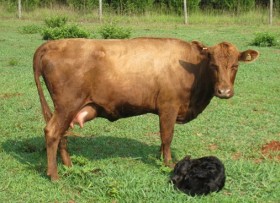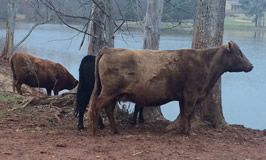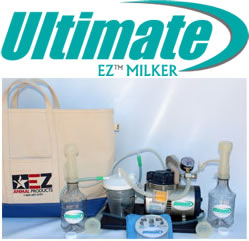by Gabriella Nanci
Genes: The units or factors of heredity that are responsible for the expression of any characteristic. Genes are tiny segments of protein contained in all cells. They normally occur in pairs and form the bridge of inheritance from one generation to the next.
Allele: Genes come in pairs (one from the father, one from the mother). An allele is either of the two paired genes affecting an inherited trait.
Dominant: an allele that causes the homozygous dominant form and the heterozygous form to look the same as each other. Example: You cannot tell a homozygous polled or a heterozygous polled animal apart. They are both polled.
Recessive: an allele that affects an animal’s appearance only if it’s present in the homozygous state. Example: A black animal that is heterozygous for red is still black. The animal has to have two red alleles to appear red. Black is dominant, red is recessive.
Codominant: an allele that causes the heterozygous form to appear like an intermediate between the homozygous recessive and the homozygous dominant form. (All three look different from each other.) Example: Short-legged, (heterozygous form) is the intermediate between the Long-legged (homozygous recessive), and Bulldog (homozygous dominant). It may be important to note that recessive, dominant, and co-dominant are clinical terms, i.e. they are based on the outward appearance of the animal.
Heterozygous: having two different alleles for a genetic trait.
Homozygous: having identical alleles for a genetic trait.
Carrier: An animal having a recessive gene in its genetic make-up. A black animal that has a hidden recessive Dun gene, could be termed a carrier of dun. Sometimes the term carrier is used in co-dominant traits.
Chromosomes: The cell material which acts as the means for transporting genes during cell division.
Gametes: Sperm and eggs.
Genotype: The genetic make-up of an animal. Compare to Phenotype.
Phenotype: The way the animal appears. Example: An animal that is phenotypically Red may have a genotype that includes hidden Dun genes.
Inbreeding: Practice of mating animals more closely related than the average of the population. Examples: full brother to sister, sire to daughter, or son to dam.
Lethal Gene: A gene which causes the death of the calf, usually before or at birth. Most gene pairs causing inherited lethals must be in the homozygous (pure) condition to be fatal to the calf. By this definition the gene that causes the short-legged Dexter is a lethal gene, but in it’s heterozygous form – therefore not in it’s fatal form.
Mutation: A rare change in the DNA.
Probability: The likelihood, chance or odds of the occurrence of any particular event. The odds of getting a heifer are 50:50 or 1:1.



